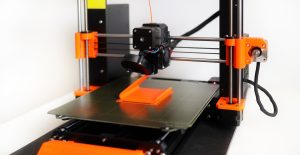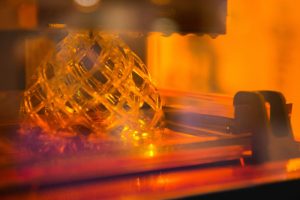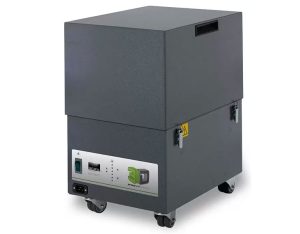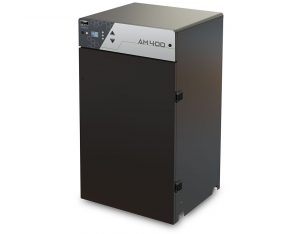Choosing the most appropriate filtration and atmosphere management system for your AM process
There’s a lot to take into account when considering which portable filtration and atmosphere management system is best suited to any given additive manufacturing (AM) process.
It’s not just about the 3D print technology being employed for the process, for example, whether that’s fused filament fabrication (FFF), sometimes referred to as fused deposition modeling (FDM), or VAT polymerization (VP), the system also needs to be tailored to the materials being worked.
Fortunately, help is at hand, because BOFA engineers have lots of experience working with the 3D print industry to design systems that deliver effective performance, matched to the type, volume, size, shape, and velocity of particles and gases to be filtered.
Determining the nature of emissions from materials being worked requires reference to Safety Data Sheets, which will list potential hazards for the workplace environment. BOFA will use this information, together with its own airflow analysis, control parameters and knowledge of each additive manufacturing process to define the optimal filtration technology.
This knowledge is critical for 3D print operators because without appropriate and tailored filtration, there is a risk to product quality through the build-up of residue on critical parts, and environmental health strategies may also be impacted. It is therefore critically important that the precise makeup of emissions is fully understood.

BOFA in-house scientific resources can help determine:
• the volume and size of particles
• gas composition (using gas chromatography – gas spectrometry)
• retention performance (using gas adsorption/desorption tubes)
A good starting point for additive manufacturers looking to invest in atmosphere management and filtration is BOFA’s industry paper looking at available academic and scientific research into particulate and gases. In particular, the research looks at FFF and VP, two processes which account for approximately 50% of all 3D parts printed.
The research shows that effective filtration can be an important contributor to workplace environmental health strategies and productivity.
Reports analyzing gases from FFF printers show that the VOCs emitted during printing can vary from different filament materials. These VOCs, some of which have odors, need to be filtered through multi-stage technology to maintain compliant atmosphere management, including an activated carbon bed.
It’s also important that these systems are designed to take account of the high temperatures involved in AM. BOFA has designed atmosphere management technology that can operate in this environment but can also help to maintain precise chamber temperature for process integrity.

Filtration will help protect printer efficiency and significantly reduce the risk of product contamination through, for example, sticky plastic droplets on moving parts.
Understanding all these challenges – temperature, the mass and makeup of emissions – is key when specifying the right system set-up and filtration media. Typically, a BOFA system will include:
1) a pre-filter (to remove larger particulate and, therefore, protect the more expensive main filter)
2) a HEPA filter (to remove nanoparticles)
3) an activated carbon filter (to filter vapors and gases)
4) a smart operating system which can regulate airflow and monitor filter condition to optimize filter life and ensure timely exchange.

BOFA has developed a line-up of systems tailored to the needs of additive manufacturing. For example, the 3D PrintPRO 4 has recently been enhanced to support FFF, stereolithography, digital light processing, and material jetting. In addition, the new stand-alone AM 400 system has been developed to include patented technology for the in-situ exchange of filters in metal additive manufacturing processes, helping mitigate the risk of a pyrophoric event.


